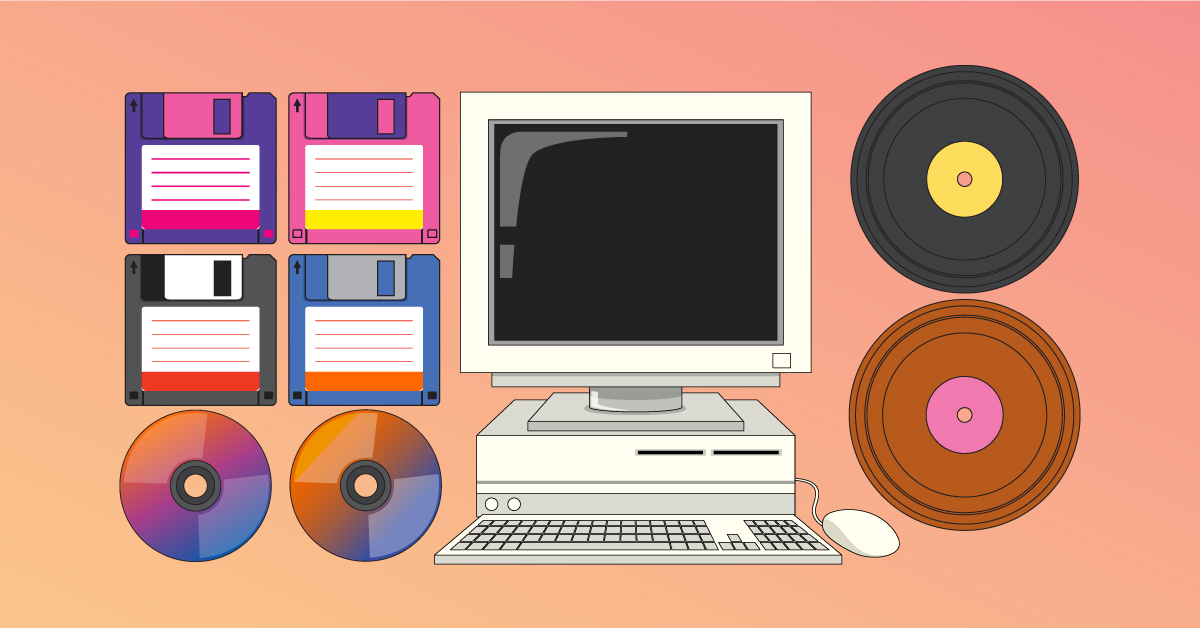Video Downloads in the 90s: The Days of Shops, CDs, and Dial-Up Connections

Video Downloads in the 90s: The Days of Shops, CDs, and Dial-Up Connections
Take a nostalgic journey through the 90s with a look at video downloads, dial-up internet, CDs, and video rental shops. Discover how technology shaped entertainment before the streaming age.
The 1990s marked a turning point in the history of digital media. In a time when streaming was nothing short of seamless and downloading happened with just one click, video downloads were not that easy to obtain; they were through dial-up internet connections, CDs, and video rental shops. Here is a trip down memory lane reflecting on the technology and experiences that defined digital media in the 90s-from the early days of CDs to the famous sound of dial-up internet.
The CD Era and Physical Media
In the '90s, accessing and storing videos were much more physical processes than it is today for digital downloads. Compact discs (CDs) revolutionized how videos were to be shared and stored even before the DVDs became well known.
Video on CD: Although DVDs would later become the dominant format, videos on CDs were common in the early 1990s. Movies and TV shows were compressed onto relatively low-quality CDs, but they were still a game-changer for tech enthusiasts.
Video Rental Shops: Before digital streaming, people would go to video rental shops to find movies to rent. Local video rental shops were at the heart of the whole entertainment scene. Videos used to be rented out through VHS tapes or CDs, and you could always buy or rent CDs featuring movies or shows recorded on them.
CDs and the UPSCD Admit Card: Interestingly enough, at the same time, UPSC started digitizing processes, and important documents like the UPSC CDS admit card 2024 were issued in digital formats as part of the growing online presence.
The Dial-Up Internet Experience
One of the most iconic features of the internet in the 1990s was dial-up. Dial-up internet was used when broadband had not yet become the popular choice. During those times, surfers got used to hearing the sound of a dial-up device connecting to the internet.
Dial-Up Internet Sound: For many, the dial-up internet sound—the series of beeps, hisses, and clicks as the modem connected—was the soundtrack of the 90s. Internet speeds were slow; downloading a single movie could take hours or even days. Patience was key when downloading files back then!
Downloading Videos via Dial-Up: Unlike today’s high-speed internet connections, downloading even short video clips was slow. If you wanted to download a movie or video on a dial-up device, you had to wait hours for the file to finish downloading—if you were lucky enough to have the time and patience for it.
The Changing Landscape of Entertainment
Even with the low internet speeds and storage availability, the 90s witnessed a transformative period in digital entertainment. CDs, dial-up internet, and video rental shops are paving their way into today's internet revolution. Some key moments were:
The Anticipation of Receiving a UPSCD Admit Card: The CDS exam and the wait for your UPSC CDS admit card 2024 in the 90s were significant milestones for many aspirants. And as those important documents, the digital shift was slowly creeping into every aspect of life hinting at the coming digital age.
Online Interactions and Video Downloads: During the flowering of the Internet, an entire world opened up into online forums, chat rooms, and social networks. These early adopters distributed links to video files but there was that undeniable thrill of finding something new online through lousy download speeds.
The Legacy of the 90s Video Download Culture
The 90's formed the foundation for today's digital video landscape. Although video download processes were slow and frustrating, this was still when the world was working around dial-up internet connections and CDs - before streaming services and rapid HD downloads became the norm.
From CDs to streaming: There is instant access for millions to hundreds of videos today at the hands of Netflix, Amazon Prime, and YouTube. Still, it could not have been because of these moments of pioneering the rapidly developed industry.
Conclusion: The 90s – A Pivotal Decade in Video Downloads
The 90s were both exciting and frustrating for videophiles. Entertainment, as a function of dial-up internet, CDs, and video rental stores, marked the 90s for the most part. The downloads of videos were at such a primitive stage in the 90s that these cannot be compared with today, especially the HD, 4K, and 8K downloads. It is against the limited technology of the 90s that one would appreciate today's high-end services in the internet and streaming.
The next time you hear the dial-up sound or see a CD in an old drawer, remember how far we have come and how these technological milestones have shaped today's digital entertainment landscape.